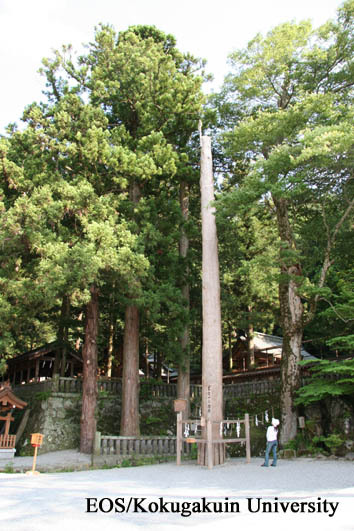- トップ
- Encyclopedia of Shinto
- Suwa Shinkō
Encyclopedia of Shinto
| Main Menu: | |
| Links: |
詳細表示 (Complete Article)
| カテゴリー1: | 6. Belief and Practice |
|---|---|
| カテゴリー2: | Shrines and Cultic Practices |
| Title | Suwa Shinkō |
| Text | The faith related to Suwa Jinja which spread throughout Japan, but centers on the shrines of Suwa Taisha, which straddle Lake Suwa in Nagano Prefecture. Suwa shrines are home to cults devoted to the kami of wind-and-water (fūsuishin), the kami of battle (gunshin), the kami of blacksmithing (kajishin) and others. Suwa Taisha is composed of an upper and lower shrine complex. The Kamisha, or the "Upper Shrine" complex, is comprised of Honmiya (Main Shrine) devoted to Takeminakata no kami which is located in Suwa City's Nakasu, and Maemiya (Front Shrine) devoted to Yasakatome no kami which is located at Chino City's Miyagawa. The Shimosha, or "Lower Shrine," is comprised of Harumiya (Spring Shrine) and Akimiya (Autumn Shrine) which are both located in Shimosuwamachi and are also devoted to both Takeminakata no kami and Yasakatome no kami. The Nihonshoki records that in the fifth summer of the Emperor Jitō's reign, because of a period of long rain, She sent an "imperial messenger" (chokushi) to worship Suwa, along with the "wind kami" (fūjin) of Tatsuta and minuchi no kami of Shinano no kuni. We catch a glimpse of the Suwa kami's character in the medieval era from stories such as that of Kōga Saburō Yorikata's return from the bottom of the earth in the form of a snake in the Shintōshū, and the description of Suwa kami as a dragon in the Suwa Daimyōjin ekotoba. It was also believed that the kami used young boys as "mediums" or "vehicles" (yorishiro). Unlike most shrines, Suwa Taisha lacks a central sanctuary (honden). This is because it preserves the ancient Shinto tradition of taking the mountain and the "divine tree" (shinboku) as the "sacred bodies" (shintai) of worship at the Upper and Lower Shrines, respectively. Tradition also holds that the "enshrined kami" (saijin) at the Lower Shrine resides at Harumiya between the second month and the seventh month, and at Akimiya between the eighth month and the first month. During the coldest time of the year when ice forms on Suwa Lake, the phenomenon of raised fissures forming in the ice was believed to be the tracks of the kami Myojin crossing the lake (called Myōjin togyo or omiwatari). Suwa shrines across Nagano Prefecture hold the "Pillar-raising festival" known as the Onbashira Matsuri in years of the Monkey and of the Tiger (i.e. every six years), in which shrines ceremonially raise four pillars (some shrines only erect one). Suwa Taisha is the first to raise the pillars, after which other Suwa shrines raise theirs. There are various explanations as to the symbolism or purpose of the four columns. Some suggest they were "vehicles" (yorishiro) for the kami to inhabit, others that they marked off the four corners of a sacred area. Still others explain them as substitutes for periodic shrine renewal ritual or as magical implements of the kami. There are many rituals at Suwa Taisha, and seven out of ten scrolls of the Suwa Daimyōjin ekotoba are devoted to ceremonies. Suwa's doctrines and rituals related to hunting are famous. The shrine produced amulets called kajikimen ("permission to eat deer") which forgave meat-eating, and mention of oshitate mikari ritual appears in the Shintōshū. Suwa Myōjin appears often in the world of literature, and there are three stories related to Suwa in the Shintōshū. Among these is the Suwa engi no koto, which may have been written or compiled by lower class religious leaders, hunters, or Shugendō practitioners, and was transmitted partly through stories told by commoner women. The Nihonshoki records that Sumiyoshi Myōjin assisted the Empress Jingū with her military expedition to the Korean peninsula, but in such medieval texts as Heike Monogatari, the Hachiman gudōkun (also read gudōkin), and the Suwa Daimyōjin ekotoba, Suwa Myōjin was also involved in the campaign, illustrating the character of this kami as a "battle kami." — Nogami Takahiro |




